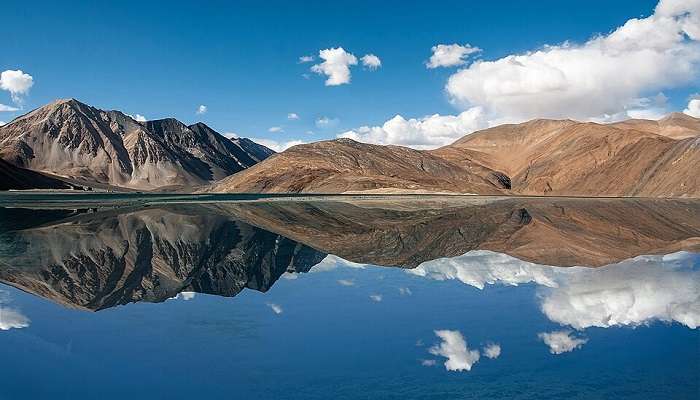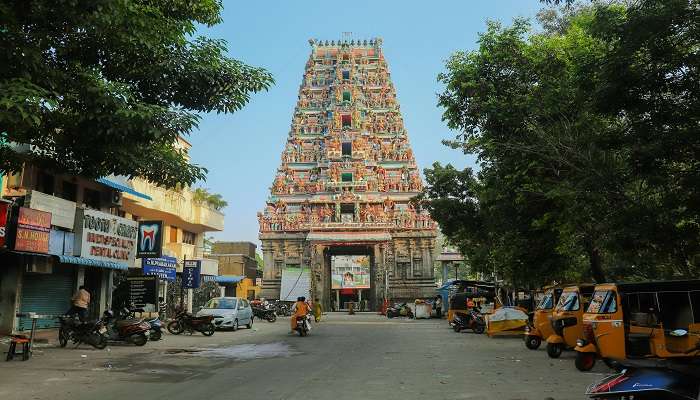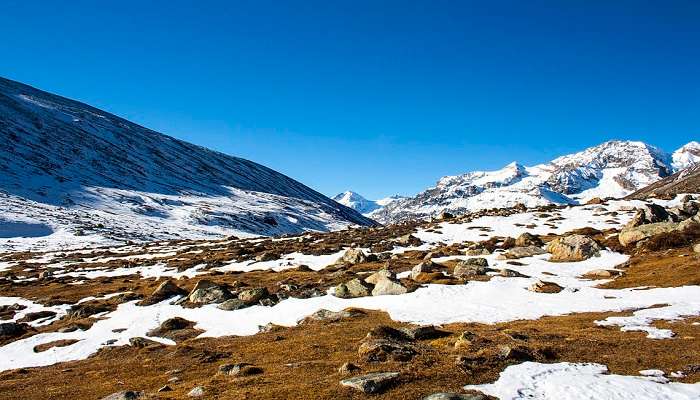A Pilgrim’s Guide To Visit The Kalyana Venkateshwara Temple In 2025
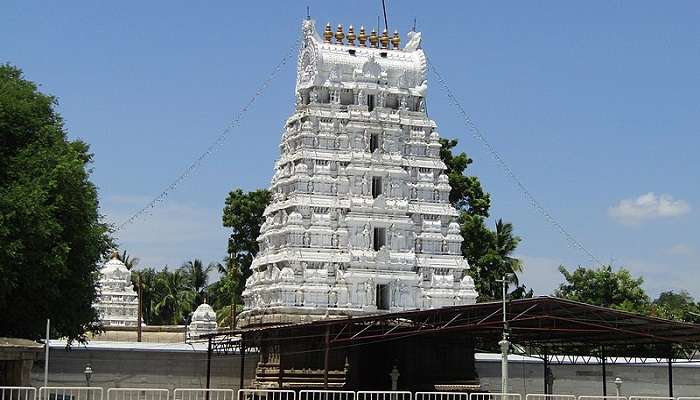
The Kalyana Venkateshwara Temple is dedicated to Lord Venkateshwara and is situated in the calm and quiet village of Srinivasa Mangapuram. This religious place has earned a reputation for having a spiritual atmosphere and ancient significance, thus regarding a visit for divine prayers and a peaceful environment. In the course of this article, we shall get to know the Kalyana Venkateshwara Temple’s history, the exact location of Kalyana Venkateshwara Temple, and finally, the timing of Kalyana Venkateshwara Temple so that one may be in a better position to organise his/her pilgrimage trip.
Discovering Kalyana Venkateshwara Temple
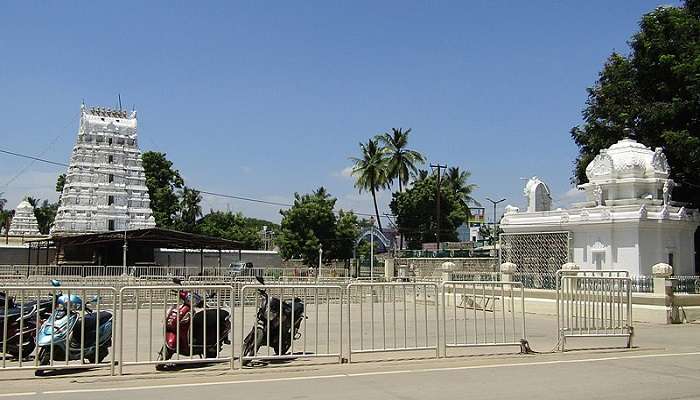
The Kalyana Venkateshwara Temple is a famous temple constructed for Lord Venkateshwara, who is said to have resided here after his wedding with Goddess Padmavathi. This temple is considered sacred, especially for newlyweds who visit to gain blessings for a good married life. The Temple’s history enriches the cultural and religious narrative, and people worldwide visit this temple every year. Plus, it is surrounded by a serene environment and holy essence, making it perfect for those seeking spiritual renewal.
The heritage of Kalyana Venkateshwara Temple can be traced back to the moments of antiquity when the Lord Venkateshwara, also referred to as the Lord Srinivasa, used to dwell here for half of the year to celebrate the marriage with Goddess Padmavathi. Local folklore has it that Lord Venkateshwara selected this place due to its tranquil setting, making it a sacred destination for worship. The temple is also believed to solve all the woes of the devotees and shower them with enormous blessings. Kalyana Venkateshwara Temple’s history is closely related to the antiquity of the culture and spiritual life of the region; thus, the shrine plays an important role for the pilgrims.
Also Read: Krishna Barrage
Location and Accessibility: Kalyana Venkateshwara Temple Location
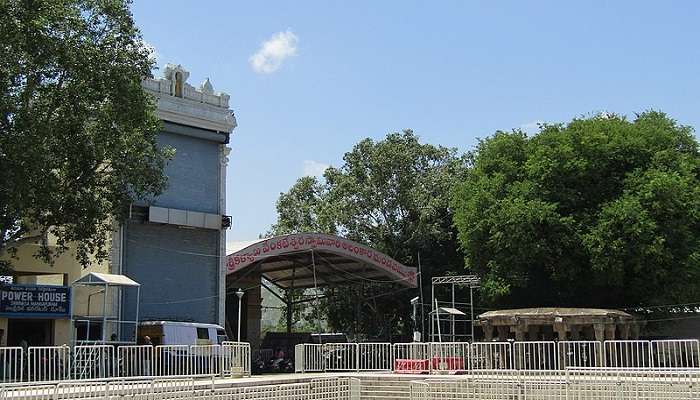
The geographical location of the Kalyana Venkateshwara Temple is in the beautiful village of Srinivasa Mangapuram, about 12 kilometers away from the much-crowded city of Tirupati in the state of Andhra Pradesh. As for the accessibility, the temple can be reached by car since the roads to Tirupati and other surrounding cities are in good condition. The nearest railway station is Tirupati, which is connected with almost all the major train stations of all the major cities of India.
Those willing to travel by flight have to use the Tirupati Airport, which is about 25 kilometers from the temple. The atmosphere in and around the Temple location is quite breathtaking and devoid of the composite crowd of a busy city.
Kalyana Venkateshwara Temple Timings
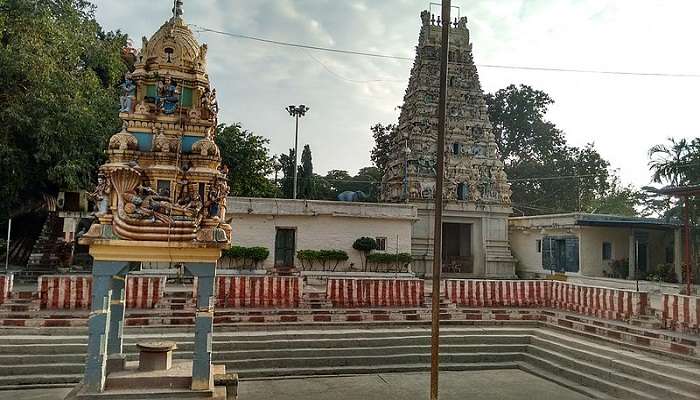
To make your visit to Kalyana Venkateshwara Temple a successful and joyful one, you need to have prior knowledge of the temple timings. This temple is also available for darshan from 5:30 AM to 8:30 PM, and several kinds of sevas are performed during the day. The detailed schedule is as follows: The detailed schedule is as follows:
- Suprabhatam: 5:30 AM
- Archana: 6:30 AM
- Sarva Darshan: 7:00 AM to 12:00 PM
- Break for Naivedyam: 12:00 PM–1:00 PM
- Sarva Darshan: From 1:00 PM to 6:00 PM
- Ekantha Seva: 8:30 PM
These Kalyana Venkateshwara Temple timings have been set in a way such that the devotees do not get a raw deal and can get ample chances of seeking blessings and going through the various rituals conducted time and again during the day.
Related Post: Amareswara Temple
The Divine Experience: Rituals and Sevas
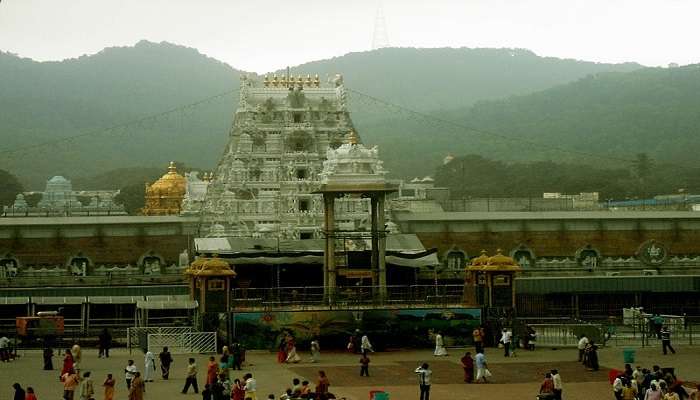
The Kalyana Venkateshwara Temple has a variety of rituals and sevas that are performed in the temple, which the devotees can opt for. They all have deep religious connotations and invaluable meaning and are strictly observed.
- Suprabhatam- The Morning Ritual: The day at the Kalyana Venkateshwara Temple starts off with an act to awaken the god through Suprabhatam. Lovers of this faith congregate as early as morning and sing hymns and songs, making it more spiritually lively.
- Archana and Sarva Darshan: The archana is a personalized prayer in which the priest chants a name, along with its holder and the family members, asking for the deity’s blessings. By operating four separate shifts of the Temple timings for Sarva Darshan, every devotee gets a fair chance at seeking blessings.
- Ekantha Seva—The Night Ritual: The day ends with the Ekantha Seva, where deities are placed to sleep. The night falls with the Ekantha Seva, where the idol is dressed to sleep. This is done in a very concentrated manner after all the activities related to the temple for the day are over. The Ekantha Seva is a quiet and joyful activity for the people involved and those in the temple.
Exploring The Temple Architecture
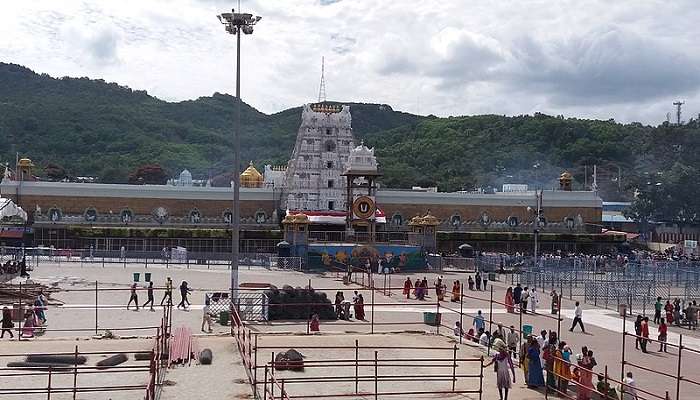
The place is not only a worship center but also a beautiful monument that holds immense historical and archaeological significance. The temple also has close affinities to the dravidian style of architecture, which is reasonably observable in terms of the sculptural work and the large gopurams, or gate towers.
- The Main Sanctum: The deity of Lord Venkateshwara is enshrined in the main sanctum, with the idol standing majestically clad in fine ornaments and clothes. The sanctum is stated to have beautiful engravings, and the architecture of the sanctum shows the cultural heritage of the region. The calm expression on the face of the divinity and its blessings of the faithful affords comfort to its followers.
- The Temple Complex: The temple occupies a large plot of land with simpler divine sanctuaries alongside the principal hall, each having its own meaning. The compound is also well endowed with beautiful gardens and an atmosphere that contribute to the tranquility and serenity of the temple adopted for meditation and prayers.
You May Also Like To Read: Sri Venkateswara National Park
The Kalyana Venkateshwara Temple is a sacred place, and devotees can get peace of mind and gain a lot of knowledge. Kalyana Venkateshwara Temple is unique with a brilliant history; the place is serene, and the timings of the Temple are perfectly structured, making many people feel that it is an ideal place to receive the blessings of the Lord. No matter whether you are engaged in the pujas, admiring the wonderful architecture of the temple, or just having a spiritual time without leaving the temple, your visit to the Temple will surely be filled with memorable and spiritual moments. So, plan your trip to Andhra Pradesh to explore more.
For our editorial codes of conduct and copyright disclaimer, please click here.
Cover Image Credit : Ramya Srivastav for Wikimedia Commons
Frequently Asked Questions about Kalyana Venkateshwara Temple
Where is Kalyana Venkateshwara Temple placed?
Kalyana Venkateshwara Temple is situated in Sri Nivasam, Mangapet, Andhra Pradesh, which is about 12 km away from Tirupathi.
What are the operational hours of Kalyana Venkateshwara Temple?
The darshan timings of the Kalyana Venkateshwara Temple are from 5:30 in the morning to 8:30 at night. There are several activities that occur during the day; these include Suprabhatam, Archana, as well as Ekantha Seva.
What is the origin of the Kalyana Venkateshwara Temple?
The history related to the Kalyana Venkateshwara Temple is of great antiquity when Lord Venkateshwara was blessed to remain here after the marriage. This temple is connected with solving the difficulties of the devotees and achieving prosperity.
When is the best time for visiting the Kalyana Venkateshwara Temple?
The recommended season to visit this temple is during the winters (October to February), as the climate is favourable during this period. It is also preferred during festive seasons, like during the period of Brahmotsavam and Vaikunta Ekadasi.
What are the rules of dressing when going to the Kalyana Venkateshwara Temple?
There is a dress code for visitors, which involves dressing modestly. Male devotees should wear dhoti or pyjamas with an upper cloth, and females should wear sarees or salwar kameez. This is to maintain decency and order in the temple.
People Also Read:
ISKCON Temple Kapila Theertham Temple Jwala Ji Temple

Passionate Marketing Student with a flair for storytelling, eagerly embarking on a journey within the vibrant world of travel. Excited to merge analytical acumen with creative skills to elevate the editorial landscape of the travel industry.



